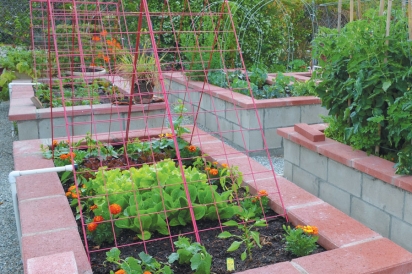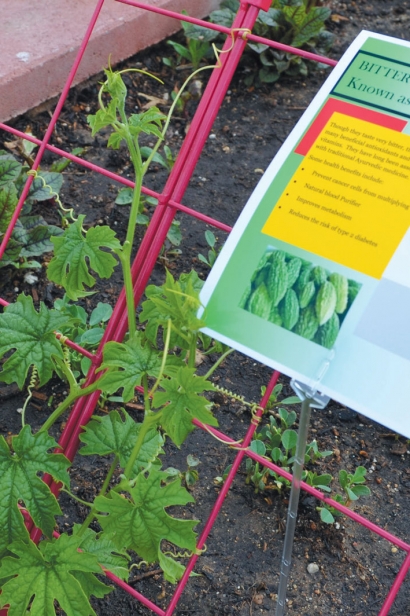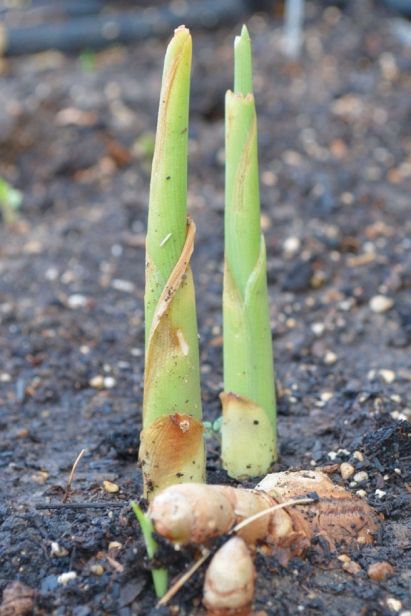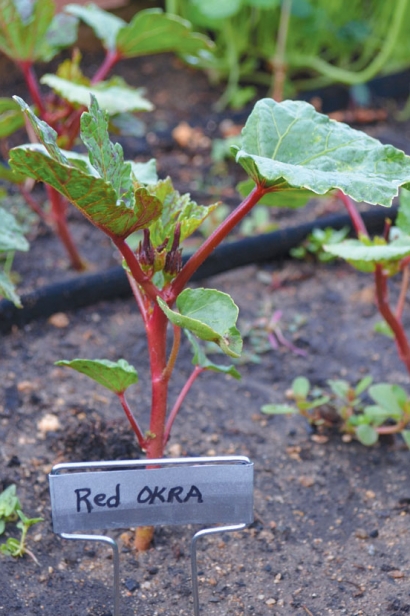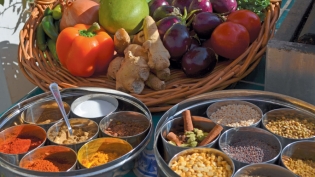Komali Nunna's Year-Round Garden Delivers Flavors from Her Native India
For many years, Komali Nunna thought she hadn’t learned much about cooking from her mother. That is, until she found herself as a newlywed living in North Dakota, thousands of miles from the rice farm in Southern India where she grew up, pining for her mother’s curries and chutneys.
“I don’t know how I learned to cook, but somehow I did because when I came here I found myself cooking my mother’s dishes. I wanted to recreate the tastes that I remembered from my country,” she tells me during a visit to her Camarillo home.
Today, Komali is an avid gardener, cooking instructor and a cookbook author who gets immense satisfaction from making Indian food approachable for the average cook, teaching her mother’s traditional Indian recipes and using Indian ingredients and cooking techniques to put an Indian spin on many American dishes. She is also passionate about educating people about the health benefits of herbs, spices and other ingredients commonly used in Indian cooking.
Her prolific organic garden and yard are filled with familiar ingredients from Indian cuisine, like fenugreek, and All-American standards, like tomatoes (though she grows 20 varieties). Not surprisingly, Komali seldom needs to purchase produce at the market, relying instead on what she and her husband, Mal, grow themselves most of the year.
“I have always been interested in farming. After living in North Dakota, we went to Boston where we were part of a community garden, but coming from Southern India I was not prepared for the cold. When my husband’s job brought us here, we found that this is the perfect place for us to live because we can grow all year,” Komali explains.
She welcomes me with a lovely spread of tender scones studded with bits of candied ginger and coconut, topped with a fragrant sprinkling of sugar, cinnamon and an unexpected ingredient: cardamom, which really adds something special to these scones. Strong coffee, fresh fruit and ruby-red homemade chutney made with pomegranates from her garden round out a beautiful breakfast.
“Once the kids left for college, I wanted to do what I was passionate about,” she says. “Working inside four walls was driving me crazy, so I quit my job [as a chemist at a biotech company] to write a cookbook in 2007.”
The resulting Entertaining from an Ethnic Indian Kitchen is a compendium of traditional and Indian-inspired recipes, as well as menu and entertaining ideas. The beautiful photographs and recipe descriptions make me immediately hungry for the flavors of my favorite Indian dishes.
Komali likes to call this a “weekend cookbook.” The recipes don’t have shortcuts and can take more time to prepare. After hearing how difficult it was for people to find time to cook, Komali adapted some of her recipes for busy weeknights. It turned into Trader Joe’s Simply Indian (2013), a “weekday cookbook” with Indian-inspired recipes using items available at Trader Joe’s— like TJ’s Masala Lentil Dip and Masala Simmer Sauce—and other ingredients to achieve authentic flavors.
Indian is one of my favorite cuisines, though I must admit that I’ve just recently begun getting comfortable with preparing Indian food. So I’m inspired by Komali and her Trader Joe’s Simply Indian cookbook because it’ll work with my hectic schedule.
In addition to the traditional curries like aloo mutter, a stew of potatoes and peas that has been dramatically simplified using a jar of masala simmer sauce, many of the recipes have a definite California feel with an Indian twist, like spinach salad with mango and cumin yogurt dressing, and grilled chicken or shrimp and pineapple tikka kabobs.
“Most recipes are inspired by what I grow in my own garden. I keep the traditional Indian spices but incorporate local ingredients. My meals all revolve around my garden.”
With that, we head out to see the source of Komali’s inspiration. Double patio doors lead to a semi-circular, tiered garden. At first glance, I see nothing resembling a fruit or vegetable garden. Instead, I see red bougainvillea growing on a shady arbor; roses and sweet Indian jasmine perfume the air. Potted ornamental plants and young seedlings of new additions to Komali’s garden are scattered around the patio.
But as we walk, she points out lemon, tangerine, apple and pear trees, as well as the berry patch. A narrow stairway leads to a landing
at the top of the hillside. Bordered by grapevines are 16 four-by- eight-foot raised gardening beds.
Here is where the lion’s share of what Komali grows is situated. There’s turmeric, bitter melon, snake gourds, ridge gourds, bottle gourds, six varieties of cucumbers, beans and peppers, red okra, laurel leaf (Indian and Mediterranean), curry leaves, Japanese shiso leaves for tempura and stevia.
About the turmeric, Komali says, “India has the lowest prevalence of Alzheimer’s disease and studies show that this can be attributed to the use of turmeric in Indian cooking.”
Between the raised beds she grows Philippine lemons, Mexican limes, Meyer lemons and makrut lime trees. “In my orchard, I have over 50 varieties of exotic fruit trees, including guava, mango, persimmons and sapote,” she says.
She also points to one of several small trees with small, delicate leaves and a peppery flavor. “Also known as Tree of Life, moringa is used in developing countries to treat malnutrition. You can add them to salads and stir fries.” The leaves have seven times the vitamin C of oranges, four times the calcium of milk and twice the protein of yogurt, according to the TreesForLife.org website.
Komali and Mal use a variety of strategies to get maximum yield from their yard. For example, one bed that she calls the “salad bowl” has kale, arugula, beets and Swiss chard. Komali plants a row every six weeks; this way she has greens throughout the season.
“In the mornings I like to come with my cup of coffee to check on my seedlings and have breakfast up here by the beds overlooking
the mountains. I can get lost here just checking every plant,” she says. Back on the patio beneath the arbor, she snips a leaf of Cuban oregano, a fuzzy, fleshy leaf with an intense oregano flavor that’s believed to be good for digestion. “This plant reminds me so much of my mother,” Komali says.
“She used to grow this plant in front of our house. When people came to visit, she would never serve just tea. She would dip the leaves in tempura batter, fry them and serve them with cilantro chutney.”
Komali sends me home with a cutting so I can grow my own Cuban oregano.
For info about cooking classes, visit KomaliNunna.com.
Komali recommends these local retailers for Indian spices:
Spice-Topia 576 E. Main St. Ventura, Spice-Topia.com
Apna Spiceland 2707 E. Thousand Oaks Blvd. Thousand Oaks



